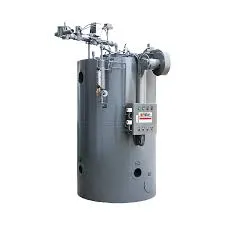- Afrikaans
- Albanian
- Amharic
- Arabic
- Armenian
- Azerbaijani
- Basque
- Belarusian
- Bengali
- Bosnian
- Bulgarian
- Catalan
- Cebuano
- China
- China (Taiwan)
- Corsican
- Croatian
- Czech
- Danish
- Dutch
- English
- Esperanto
- Estonian
- Finnish
- French
- Frisian
- Galician
- Georgian
- German
- Greek
- Gujarati
- Haitian Creole
- hausa
- hawaiian
- Hebrew
- Hindi
- Miao
- Hungarian
- Icelandic
- igbo
- Indonesian
- irish
- Italian
- Japanese
- Javanese
- Kannada
- kazakh
- Khmer
- Rwandese
- Korean
- Kurdish
- Kyrgyz
- Lao
- Latin
- Latvian
- Lithuanian
- Luxembourgish
- Macedonian
- Malgashi
- Malay
- Malayalam
- Maltese
- Maori
- Marathi
- Mongolian
- Myanmar
- Nepali
- Norwegian
- Norwegian
- Occitan
- Pashto
- Persian
- Polish
- Portuguese
- Punjabi
- Romanian
- Russian
- Samoan
- Scottish Gaelic
- Serbian
- Sesotho
- Shona
- Sindhi
- Sinhala
- Slovak
- Slovenian
- Somali
- Spanish
- Sundanese
- Swahili
- Swedish
- Tagalog
- Tajik
- Tamil
- Tatar
- Telugu
- Thai
- Turkish
- Turkmen
- Ukrainian
- Urdu
- Uighur
- Uzbek
- Vietnamese
- Welsh
- Bantu
- Yiddish
- Yoruba
- Zulu
Nov . 06, 2024 01:09 Back to list
small plate heat exchanger
The Advantages and Applications of Small Plate Heat Exchangers
Small plate heat exchangers have emerged as a key technology in various industrial and residential applications due to their compact design, efficiency, and versatility. Unlike traditional shell-and-tube heat exchangers, small plate heat exchangers are composed of multiple thin plates stacked together, creating a series of channels through which two fluids can flow. This design allows for a larger surface area for heat transfer within a smaller footprint, making them ideal for space-constrained environments.
One of the primary advantages of small plate heat exchangers is their high thermal efficiency. The thin plates enable a large area for heat transfer while minimizing the volume of fluid inside the exchanger. This results in a more efficient heat transfer process, as the fluids can exchange heat along a larger surface area. Consequently, industries that require precise temperature control, such as food processing, pharmaceuticals, and HVAC systems, benefit immensely from utilizing these heat exchangers.
Another significant benefit is their ease of cleaning and maintenance. The plate design allows for easy disassembly, providing straightforward access for cleaning. This is particularly important in applications involving viscous or fouling fluids where regular maintenance is essential to maintain performance and hygiene standards. The ability to efficiently clean the heat exchanger translates into lower operational costs and prolonged equipment life.
small plate heat exchanger

Small plate heat exchangers are also highly adaptable. Their modular design allows them to be configured in various ways to meet specific application requirements. They can be used for both heating and cooling processes and can handle a wide range of temperatures and pressures. This versatility makes them suitable for diverse industries, from power generation to marine applications.
In addition to efficiency and adaptability, small plate heat exchangers are more environmentally friendly than traditional models. Their compact size reduces the amount of material needed to manufacture the unit, and their higher efficiency leads to lower energy consumption. This reduced carbon footprint aligns with global efforts to promote sustainability in industrial processes.
As technology advances, innovations in materials and design continue to enhance the performance of small plate heat exchangers. Manufacturers are exploring new corrosion-resistant materials and improved plate designs that increase heat transfer rates further. This ongoing development ensures that these exchangers will remain a vital component in energy management strategies across various sectors.
In summary, small plate heat exchangers represent a significant advancement in thermal management solutions. With their high efficiency, ease of maintenance, adaptability, and environment-friendly characteristics, they have found applications in multiple industries. Whether involved in process heating, cooling, or recovery, these heat exchangers play a crucial role in enhancing operational performance while contributing to the sustainability goals of modern industries. As demand for energy efficiency and eco-friendly solutions continues to grow, small plate heat exchangers are well-positioned to meet the challenges of tomorrow’s thermal management needs.
-
Steel Reinforced Concrete Pipe Bottom Ring Moulds Buy Custom Solutions
NewsMay.19,2025
-
Original Concrete Pipe Mold Bottom Ring & Pallet Chinese Factory Direct Sale
NewsMay.19,2025
-
Custom Room Heating Heat Exchangers Energy-Efficient Solutions
NewsMay.18,2025
-
Precision Milling Body Casting Solutions Custom & ODM Options
NewsMay.18,2025
-
Custom Cast Silicon Aluminum Heat Exchanger for Hot Water Boiler High Efficiency
NewsMay.18,2025
-
Premium Custom & ODM Vehicle Parts Bulk Order Deals
NewsMay.17,2025


